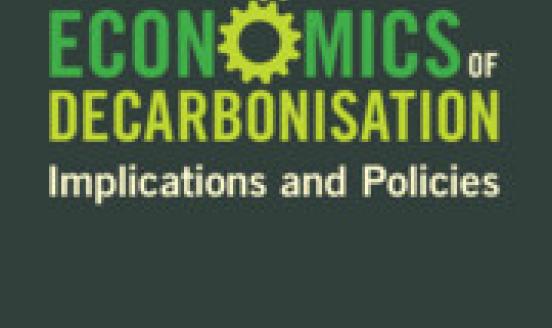Amsterdam’s boom-bust housing market needs its own mortgage limits
House prices in the Netherlands are on the rise again. But at the local level the pattern is very uneven: house prices in major cities are rising fast
The phenomenon of rapidly rising house prices in major cities is not unique to the Netherlands. It is happening across the world. According to UBS (2016), house prices in a selected group of 18 global financial centres have increased by on average a total of 50 percent since 2011. Amsterdam is among the cities with the highest increase.
In this blog, we look into the particular case of the Netherlands in more detail, and investigates the differences between the capital city and the rest of the country.
Panel 1 shows the year-on-year (yoy) growth in house prices in the Netherlands and its capital (for other Dutch cities, see panel 2). This is a general index of existing houses and is based on sale prices. During the crisis, prices fell sharply. The price drop peaked at -9 percent yoy in Q2 2013, but at the end of 2016 housing prices were once again on the up. They were increasing by 6 percent in the Netherlands as a whole, but by 14 percent in Amsterdam. That is a significant difference in momentum.
What are the underlying dynamics of house price growth? Low interest rates are one of the reasons behind the worldwide upturn in house prices. However, that cannot explain the difference between the city and the countryside observed in the Netherlands. Specific factors must be at play.
These include structural factors such as labour mobility from the countryside to the cities, as well as migration from outside the Netherlands (migrants tend to concentrate in the most populated urban areas). These factors have led to higher population growth in Amsterdam than in the rest of the country. For example, these movements might be spurred by the rise of new services and digital companies. These firms typically locate in larger cities (with good airport connections and lifestyle facilities), whereas industrial companies are typically more spread out over the country. Combined with a shortage of new homes in the city, that extra demand leads to price increases. Ironically, Amsterdam is now planning to increase its housing supply by 20 000 homes, but these might come too late and land on the market during the next downturn.
The big question is thus whether these factors can continue to drive higher city house prices in the future. First, we see that migration towards cities is a long-term trend which is not really affected by the economic cycle. Second, supply constraints should sustain prices both during booms and busts. Moreover, the delayed increase in housing supply is a well established phenomenon, and it is in fact a major reason for turning points in the housing cycle (Shiller, 2008).
Looking at the historical pattern in the Netherlands since 1995 (visible in panel 1) the message is quite clear: while house prices in Amsterdam rise faster in upturns, they also drop faster in downturns. So, the specificities of Amsterdam do not seem enough to justify permanently higher price increases. Only the amplitude of the housing cycle is stronger. A case in point is the late 1990s, when Amsterdam prices went up by 30 percent yoy at the peak while the country price growth peaked at 20 percent. The subsequent downturn was bigger in Amsterdam with prices declining by 5 percent yoy, while the overall country price growth only decelerating to 3 percent yoy.
While cyclical patterns are difficult to identify (especially in real time), such cycles, if they happen, can lead to financial stability issues. Reinhart and Rogoff (2009) provide extensive historical evidence that booms and busts in housing prices are at the heart of many financial crises.
The first issue around falling house prices is the credit crunch effect on banks. In good times, banks earn a good profit on mortgages, leading to more lending. In bad times, increased provisions eat in banks’ capital, leading to reduced lending – to the corporate sector as well.
The second problem is consumption. Consumers use the net wealth from house price increases for extra consumption in the upswing, while reducing consumption during the downturn. In the Netherlands, one out of six households had negative equity (a current house value below the mortgage value) during the last downturn from 2011 to 2013, which prolonged and deepened the recession in the Netherlands.
We draw several conclusions from the historical behaviour of housing prices in Amsterdam. First, the argument that Amsterdam is different, justifying higher price increases due to structural factors, should be discounted. Yes, Amsterdam is different, but mainly because of the cyclical pattern of its housing prices. Rigid supply side restrictions, like strict planning authorisations and regulated council housing, should be relaxed to reduce the supply constraint putting pressure on prices.
However, this might unfortunately not be enough to put an end to the specific pattern of Amsterdam house prices. In that case, are policies based on a national index appropriate to deal with the overly cyclical pattern observed in Amsterdam? Currently, in terms of macroprudential policies, a maximum loan-to-value (LTV) ratio has been put in place in 2010 at the level of 112% and is gradually phased out towards 100% over a period of 8 years. The Financial Stability Committee advised future governments to continue the gradual lowering of the LTV limit for mortgage loans after 2018 towards 90% by keeping up the current pace of reduction of one percentage point per year.
With prices rising by 6 percent across the Netherlands, this advice appears sensible and there is no reason for macroprudential policies to intervene more forcefully. However, the high price rises in Amsterdam may justify further macroprudential action to take the heat out of that particular market. A differentiated macroprudential policy could, for example, be implemented through different standards for LTV or debt-to-income (DTI) ratios for mortgages in Amsterdam.
The experience of Korea is very instructive in that matter. Fifteen years ago, Korea put in place a differentiated application of LTV and DTI ratios in Seoul according to zip-codes, in order to tighten policy more quickly in areas more prone to overheating. As explained in detail by Igan and Kang (2011), limits are set differently for so-called speculative and non-speculative zones.
An area is designated as a speculative zone if both the following criteria are satisfied:
- the monthly house price index rose more by than 1.3 times the nationwide CPI inflation rate during the previous month
- either (i) the average housing price growth rate in the previous two months was higher than 1.3 times the average of the national one in the previous two months, or (ii) the average of the month-on-month housing price growth rates over the previous year was higher than the average of the month-on-month national one over the previous three years.
Since 2002, the Korean authorities who share responsibility for macroprudential policies (the central bank and the financial supervision agency) have several times imposed tighter limits on LTV and DTI ratios in specific areas, in an attempt to tame local house price booms. The analysis of Igan and Kang shows that these measures were successful in curbing housing prices and the number of transactions. Competent national authorities in Europe, and in the Netherlands in particular, should definitely consider adding this instrument to their macroprudential toolkit in order to increase the granularity, and therefore the effectiveness, of their policies. This could help to avoid any overheating in local housing markets and their potential dire consequences.
The authors would like to thank Konstantinos Efstathiou for excellent research assistance.
References
Financieel Dagblad (2016) ‘Regio Amsterdam geeft gas en gaat 20.000 extra woningen bijbouwen’, 12 December 2016.
Igan, D. and H. Kang (2011), ‘Do Loan-To-Value and Debt-To-Income Limits Work? Evidence From Korea’, Working Paper No. 11/297, International Monetary Fund
Reinhart, C., and K. Rogoff (2009), ‘This Time is Different: Eight Centuries of Financial Folly’, Oxford and Princeton: Princeton University Press.
Shiller, R.J. (2008), ‘Historic Turning Points in Real Estate’, Eastern Economic Journal 34(1), 1-13.
UBS (2016), ‘UBS Global Real Estate Bubble Index, For housing markets of select cities’, Switzerland.



